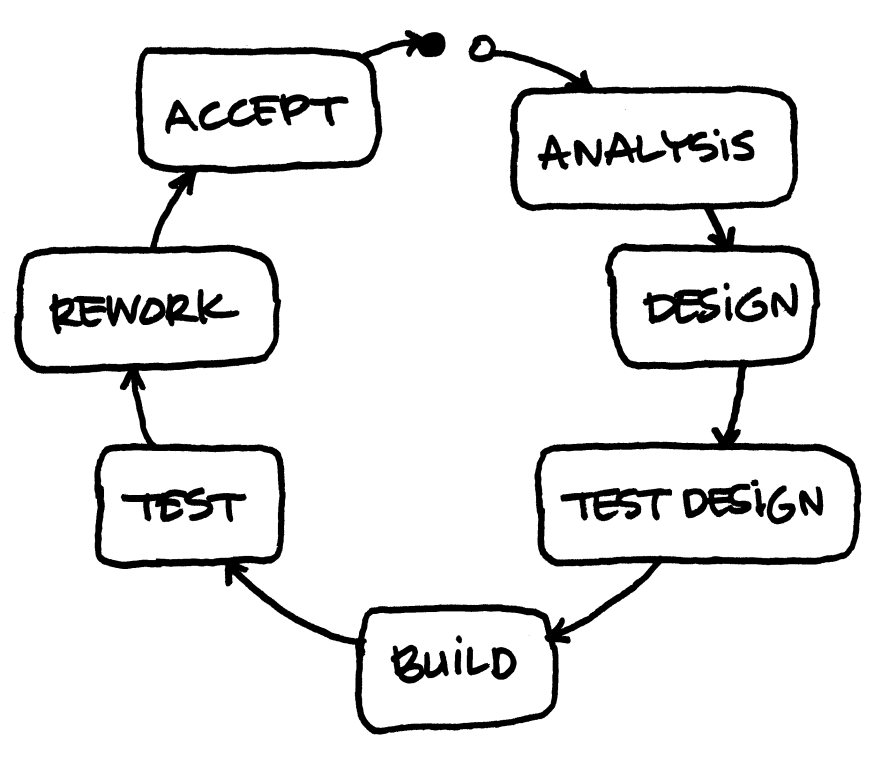 In life just as at work, you may have had someone ask you the dreaded question “Are you done yet?” In life outside of work, we can consult our own minds to make the determination if something is done or not. In an agile work environment you are most likely not the only one involved in making that decision. Everyone’s opinion on what “done” means may vary. That is why to ensure transparency and improve quality in an agile environment, the definition of done (DoD) must be clearly defined and have a consensus among the team. We will walk through what the DoD is, an example of how to create a DoD and what value it brings to the sprint cycle.
In life just as at work, you may have had someone ask you the dreaded question “Are you done yet?” In life outside of work, we can consult our own minds to make the determination if something is done or not. In an agile work environment you are most likely not the only one involved in making that decision. Everyone’s opinion on what “done” means may vary. That is why to ensure transparency and improve quality in an agile environment, the definition of done (DoD) must be clearly defined and have a consensus among the team. We will walk through what the DoD is, an example of how to create a DoD and what value it brings to the sprint cycle.
First let’s get the definition of done out of the way. According to the Agile Alliance and Institute (2014) the DoD is “a list of criteria which must be met before a product increment often a user story is considered done”. In other words, it is the acceptance criteria the work must pass to be evaluated as complete. It can be in the form of a “Done List” or a “Done Checklist”. There is no preference on what it is called because they both produce the same results.
 Furthermore, when making the list, you can fill the list(s) with initial categories and then put items into those categories. For example, the categories could be story completed or iteration completed. The story completed category could contain tasks like programming done, testing done and/or documentation done. However, you develop your DoD, there should be acceptance criteria from the client in there somewhere. This will decrease guess work and ambiguity.
Furthermore, when making the list, you can fill the list(s) with initial categories and then put items into those categories. For example, the categories could be story completed or iteration completed. The story completed category could contain tasks like programming done, testing done and/or documentation done. However, you develop your DoD, there should be acceptance criteria from the client in there somewhere. This will decrease guess work and ambiguity.
In addition, the DoD is critical to having successful sprints. The most important feature of the DoD is it keeps hidden work or scope creep from happening. A successful sprint must deliver a potentially shipping product (PSP) by the time the sprint has ended. That means a user story or a combination of user stories must be completed to a point that the next release of the product can be packaged up and sent to its users.
To make sure the sprints are prosperous, the exercise of creating the DoD must take place stated previously. The DoD gets iteratively worked just like the user stories within each sprint. The only difference is the DoD gets worked outside of sprints only. According to Scrum.org (2013), “the Definition of Done is not changed during a Sprint, but should change periodically between Sprints to reflect improvements the Development Team has made in its processes and capabilities to deliver software” . It is recommended that the team members and the stakeholders come up with a current or realistic version and an ideal version. This way the team always has stretch goals to strive for to improve the quality of the product. An ideal DoD may be to have 100% code coverage, but the reality is most likely to hit 80%.
In conclusion, a good DoD will change the “Are you done yet?” question into a much better question “Is the story completed yet?” Moreover, you will find the risk is reduced, teams are more focused, and communication between the client is better. By making the DoD a way of life and committing to exceptional work, the client will be able to visualize what complete really is.
Click here to view the Criterion Report
References
Agile, A. A. (2013, February 13). Guide to Agile Practices. Retrieved from Definition Of Done: http://guide.agilealliance.org/guide/definition-of-done.html
Scrum.org. (2014, April 25). Improving the Profession of Software Development. Retrieved from Definition of Done: https://www.scrum.org/Resources/Scrum-Glossary/Definition-of-Done
Life Cycle Image
http://ditisagile.nl/wp-content/uploads/2012/12/Use-case-Life-cycle.png
Definition of Done Image
https://www.scrumalliance.org/community/articles/2014/january/why-using-a-definition-of-done-in-an-agile-project

Leave a Comment